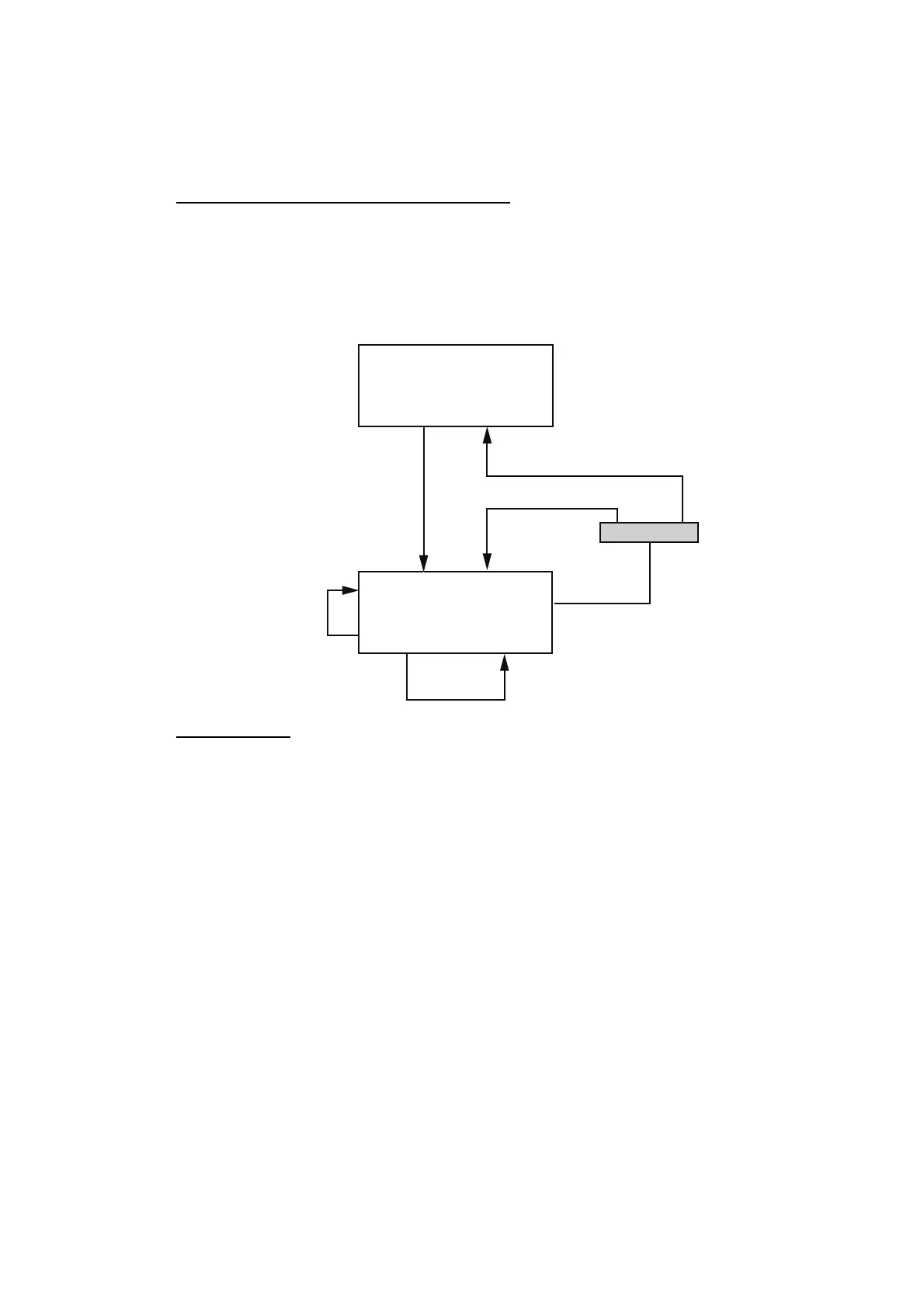25. ALERT MANAGEMENT SYSTEM (option)
25-4
25.6 Alert-related Sentences
25.6.1 ACK/ALR sentences
Overview of alert acknowledgment flow
The function of the AMS is to coordinate exchange of alerts and acknowledgement of
alerts between equipment connected to the AMS.
This AMS is designed according to the IEC’s recommendations for Alert Handling (80/
520/INF). The figure below shows the transition of the Alert status at the sensor.
Device states
A sensor has two main states, N and A.
State N: No active alerts. The device should send a "no-alerts" message with an in-
terval of a maximum of 60 seconds. This message informs the AMS that the sensor
has no active alerts.
State A: The device has one or more active alerts, of which zero or more may have
been acknowledged and the rest (possibly zero) are unacknowledged. In this state,
the device shall send all active alerts at an interval not greater than 60 seconds. When
multiple alerts are active in the sensor, all active alerts are transmitted as a “list" of
alerts (alert-list message). In response to the “list”, applicable sensors output the ALR
sentence, the content of which is defined in IEC 80/250/INF.
In addition to the periodic transmission mentioned, the sensor sends an Alert message
(ALR) to the AMS when an alert is generated in the sensor in the following instances:
• A new alert is generated in the sensor.
• An existing alert is acknowledged in the sensor, either by the sensor itself or by re-
mote acknowledgement by the AMS.
• An existing alert condition becomes non-active.
NO ACTIVE ALERTS
Send no-alerts message
(max. 60 seconds between)
Yes
(send event; clear list)
ACTIVE ALERT(s)
Send alerts-list message
(max. 60 seconds between)
No
(Send event;
update list)
Alert reset.
Last in list?
Change in alert ACK state
(Send event; update list)
New alert
(Send event; update list)
New alert
(Send event; create list)

